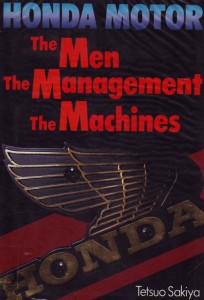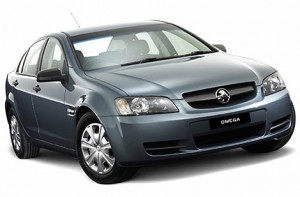The Falcon to die
If you follow cars in Australia, I am sure that you have heard the news. Ford has decided to stop building cars here, and unless there is a radical change of mind, production of the Falcon will stop within a few years.
This has occurred primarily because of dwindling sales of the Falcon – a car that went from selling around 75,000 units per year in 2002 to about 12,000 in 2012.
That is a tragedy: a tragedy for the workers directly employed by Ford, and also for the workers of supply companies that will now likely go broke. It is also sad for the country as a whole: having the capability to design and manufacture as complex an item as a complete car is not to be sneezed at.
But it is also the outcome of a bunch of utterly stupid management and product planning decisions made by Ford itself. For all the talk of high wages, the value of the Australian dollar and the like, no one should refrain from looking hard at what Ford in Australia chose to spend their money on.
The FG Falcon, released in April 2008, was a car characterised by utterly misplaced priorities, to an extent that was staggering then and remains staggering in retrospect. In 2008, the downwards trend in Falcon sales had been in place for four years. People were moving from the Falcon to smaller cars – or, conversely, to large and multi-purpose four-wheel drives. Social and engineering change in the world of cars was profound: the Prius had been on sale for nearly a decade; fuel prices were only going to keep on rising; and people were looking for flexibility in their cars – the ability to carry five people one day, and then carry big items home from the hardware store the next. All of this was obvious… but not to Ford.
The day after the FG Falcon was released, I wrote in this publication:
It’s very hard to believe that the Falcon will not go the way of the Mitsubishi 380 – and for much the same reasons. High quality engineering directed in completely the wrong direction, aiming at a target that started to move a decade ago and has now gone…
After driving the car we published these notes:
Feels very much like Mitsubishi 380 in that the FG is a car that with exception of some minor electronics, could have been released a decade ago – nothing special in performance/economy, interior space utilisation, interior design, styling (inside and out). Highly competent car but at the things (eg handling, long distance cruising, NVH) that are not a priority for most people.
A ‘nothing’ car in terms of progress. Feels like design priorities were set for what would work in mid Nineties – RWD handling, long distance Australian road travel, inoffensive (and unexciting) conventional styling inside and out. Needs – far better fuel economy option (eg diesel, LPG on downsized engine), much better interior design (literally zero progress made here!), better centre dash ergonomics.
My summary in a full road test of the car was:
With the exception of crash safety and the electronic stability control system, the FG Falcon reflects the design priorities of a different era. In short, Ford apparently believes balls-to-the-wall handling to be more important than fuel economy, and in-cabin styling to be more important than practicality. Simply, the money could have been much better spent.
New engine options – including possibly a diesel – are apparently coming, but as the car stands right now, it’s the epitome of a botched opportunity.
Of course, the diesel never came. Instead, we had that Ford choosing to sell the car with an engine range that included two high performance, thirsty engines – a V8 and turbo six.
One hi-po engine – sure. But two? What did they think this was, the 1980s?
And the issue with wasting internal resources like this is that those dollars could have been put into something else – like fitting a four cylinder. It took until 2012 to do that…
In a column written in December 2009, under the heading of ‘Making very bad product planning decisions’ I said:
The car that this year amazed me the most was the Ford FG Falcon.
The model that I would think sells the best – the XR6 – was incredibly off the pace in the things that matter to most purchasers. All I can say is: what on earth was Ford thinking when they set the priorities?
But to be honest, I could not – and still cannot – believe how bad the FG Falcon is…. and ‘bad’ in the context of what the car is supposed to achieve.
Why on earth did the company spend lots of money on a new front suspension design and steering when out on the road, pushing the car to anywhere near its very high limits is illegal? To put this another way, in virtually all road use, what was wrong with the previous model’s suspension?
That (rumoured) $100 million spent on the new front suspension could have been used to make the air conditioning actually work and improve interior packaging – both would have had far more positive impact on potential purchasers than getting better turn-in at 150 km/h…
And the fuel consumption!
Forget the official government test figures: at a measured 12.5 – 13.5 litres/100km in the city, there appears to be no real-world improvement in a decade. That is simply unforgiveable.
The Falcon angers and frustrates me. The decisions that Ford’s myopic product planners took, in the face of overwhelming worldwide evidence, has cost this country – and Ford – a lot of jobs and money.
At the time these words were being published, our comments section (which unfortunately is not currently visible) was full of people saying how wrong I was.
The automotive journalists in Australia – every darn one of them – said how great the car was. Other than AutoSpeed, not a single publication suggested that the car was utterly wrong for the time and would be a flop – probably sending Ford under in terms of manufacturing in this country. “FG Falcon stuns” read one media test headline. Stuns for what – its inept direction? No, the test didn’t actually say that…
In fact, I was so amazed by the lack of criticism of Ford’s approach with the FG that I wrote a bitterly ironic column with the sole focus being how stupid the decisions underpinning the FG were. I called the Falcon The Ideal Car for the Times.
So why did Ford chose to make the decisions it did?
We will probably never know…. those who set the direction are hardly likely to confess – let alone, try to justify what they did. And sure, Ford was working within tight limitations regarding money and resources – but that just made it even more important that those product planning and engineering decisions showed an understanding of a changing car buying market – not to mention societal change on a broader scale.
But I honestly feel more depressed about it all than triumphant. I am sad to see part of Australia’s engineering and industrial heritage disappear…and once it has gone, you can be certain it will never come back.

 Julian Edgar, 50, has been writing about car modification and automotive technology for nearly 25 years. He has owned cars with two, three, four, five, six and eight cylinders; single turbo, twin turbo, supercharged, diesel and hybrid electric drivelines. He lists his transport interests as turbocharging, aerodynamics, suspension design and human-powered vehicles.
Julian Edgar, 50, has been writing about car modification and automotive technology for nearly 25 years. He has owned cars with two, three, four, five, six and eight cylinders; single turbo, twin turbo, supercharged, diesel and hybrid electric drivelines. He lists his transport interests as turbocharging, aerodynamics, suspension design and human-powered vehicles.


